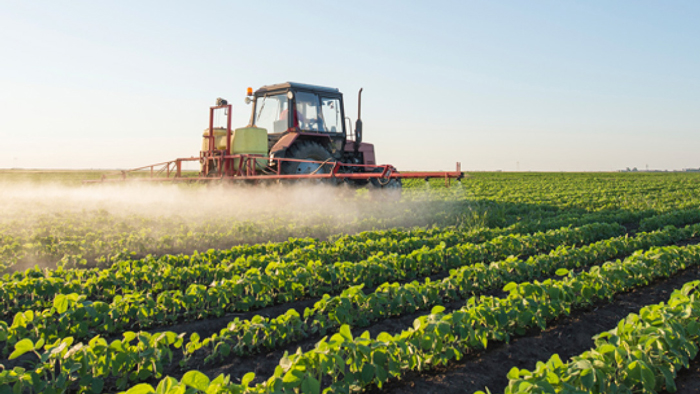Soybean Fungicide Application Needs to be Considered on a Case-By-Case Basis

By Shari Narine
“As soybean interest grows in the west and as growers get more familiar with the bean and want to try different things, I think there is the possibility of using fungicides in the future,” says Doug Fotheringham, Syngenta’s agronomic service representative for Manitoba. “There’s a lot of talk about high management soybeans these days and what that means. I think guys who are more familiar with growing soybeans are trying to push the envelope a little bit … (and) there might be a need for fungicide application in the high management scenario.”
At this point, though, most soybean specialists are in agreement that the use of fungicides needs to be considered on a case-by-case basis taking a multitude of variables into consideration including temperature, soil moisture, crop rotation, field history, and, of course, profitable increase in yield. If the season is promising to be dry, if the field hasn’t been susceptible to disease with previous pulse crops, if drainage is good, if fungicide application cannot take place in the R2 and R3 stages, then the cost benefit of using a fungicide is less likely to be realized.
“The disease pressure is relatively low in Manitoba, in Western Canada, because it is a relatively new crop for most of Manitoba outside of the Red River valley,” says Glen Forster, BASF technical marketing specialist for fungicides, Western Canada.
Forster says the Red River Valley is unique in Western Canada, where soybeans have been grown for a couple of decades and the area borders on the United States, where soybeans are also a popular crop. The use of fungicides has a bigger impact in the Red River Valley because of the potential for the accumulation of disease.
But producers elsewhere in Manitoba as well as some in Saskatchewan are taking into consideration both their yield potential and making use of fungicides as a preventative application. It is critical, says Forster, that fungicides be applied at the proper stage of growth for the plant to see health benefits.
But the most effective way producers can use fungicides and the most common way producers have chosen to protect against disease is by planting treated seed. Producers have the option of planting their seed bare, but most choose to have their soybean seed treated by their retail operators, says Fotheringham.
Seed treatment is a valuable tool against soil- and seedling-borne diseases, says Dr. Michael Wunsch, with Carrington Research Centre at North Dakota State University.
“Once you grow soybeans more often, especially on the type of tight rotations that we have State-side, root diseases become an issue,” he says. Wunsch lists Pythium, Rhizoctonia, Fusarium, and Phytophthora as major targets for seed treatment fungicides.
Forster agrees that seed treatment is valuable when considering soybean yield.
“Just getting it out of the ground and growing as quickly as possible, because we still do have a short growing season for soybeans in Western Canada, so any extra days you can get to ensure that the plant isn’t suffering early on is important. That includes both using good seed treatment and using a good inoculant to make sure you are doing the best that you can to get that crop growing,” says Forster.
While fumigants are also an option, Professor Fouad Daayf, department head of plant science at the University of Manitoba, says that is a riskier way to treat soil-borne disease. Fumigants kill both the good and the bad microorganisms in the soil and, as it is the harmful microorganisms that tend to grow back first, fumigation would have to be carried out every year.
Daayf says his department is working on an alternative to fungicides and fumigants.
“We’re trying to find microbes that naturally grow with soybeans that would provide some sort of protection for the plant against these diseases,” he says. “We’re also trying to find some (Rhizobacteria) in soybean fields, isolate them, see how they work, and then get them back into the system to protect the plants.”
Daayf is collaborating with Omex Canada, a company that develops nutrients to deal with specific crops.
“Sometimes just playing with nutrients helps with disease reduction,” he says.
Crop rotation is also an effective way to control root diseases, says Wunsch.
However producers decide to treat disease – whether it’s seed treatment, fungicide use, fumigants, crop rotation, or nothing at all – cost must be taken into consideration.
“That’s always an equation each producer has to deal with depending on the type of pathogen they’re trying to fight … because you don’t want to spend a lot of money treating whatever you are growing and in the end the return is not worth it,” says Daayf.
Forster encourages producers to carry out their own trials. If they see the benefit of applying fungicides then they can readily budget fungicide-use into their costs.
“It’s still at its infancy and as rotations become a bit tighter, as we have more soybeans across the area, and that in itself also increases the potential of diseases to come in and to be more consistent year in-year out, and it goes from being a wait-and-see approach to a planned fungicide approach,” says Forster. “Agronomy always showcases that the diseases will become more important moving forward into the future.”


